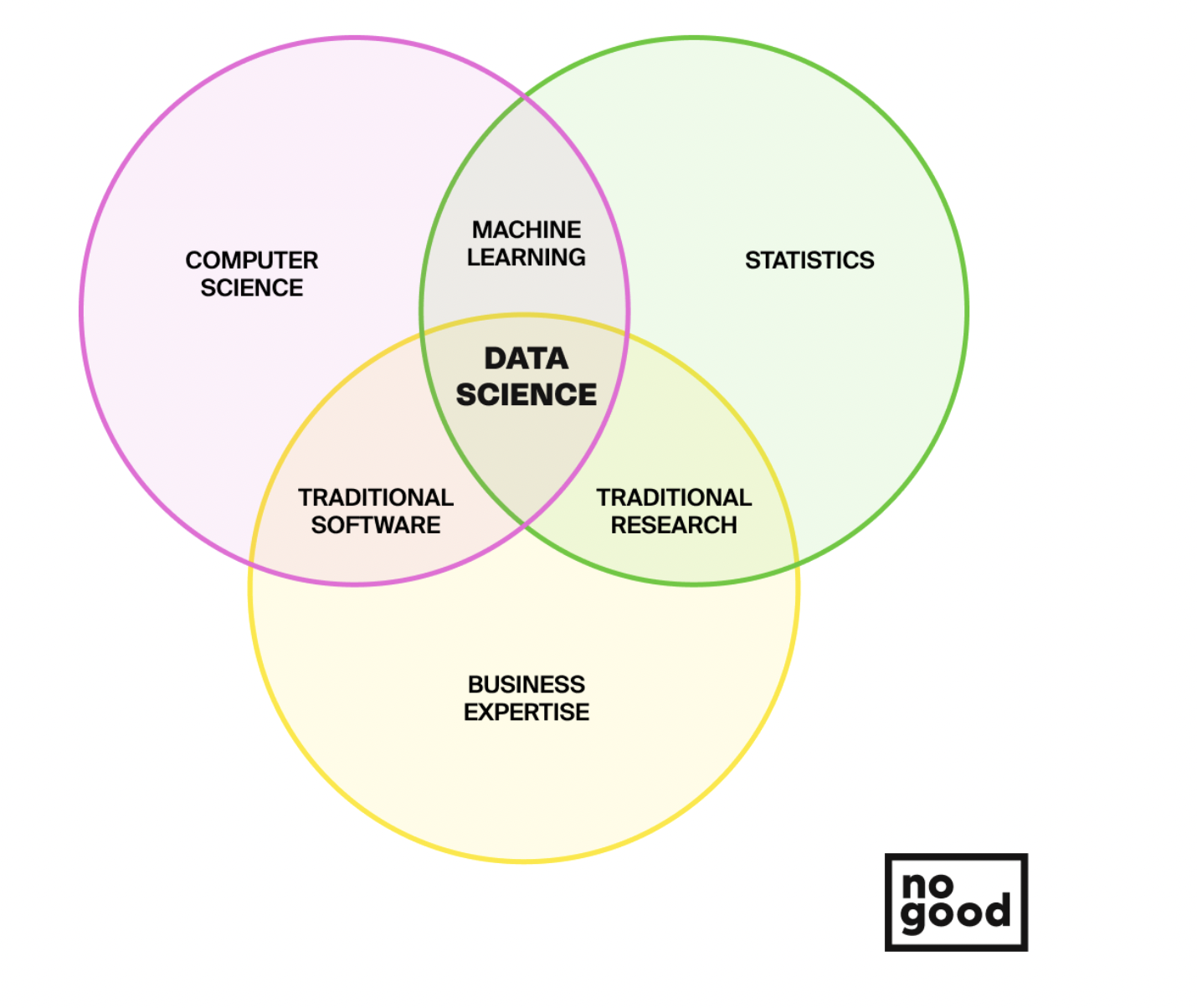This article was published as a part of the Data Science Blogathon.
Introduction
In the era of big data, it’s no surprise that more and more marketers are using data science in marketing to better position their brands, products, and services in today’s hyper-competitive marketplace.

Source: https://nogood.io/2022/05/26/data-science-marketing-guide/
Four points that you need to take into your brain.
-
Assists in identifying market opportunities.
-
Customized marketing campaigns
-
Insights into product creation and design
-
Insights on pricing models
That said, many marketers aren’t exactly sure where to start when it comes to data science on marketing; after all, many don’t have the expertise required even to begin analyzing marketing data properly.
Why use Data Science?
Marketing departments across the world are pushing their budgets toward digital marketing efforts. Studies have shown that online advertising has become more effective and cheaper than traditional, offline methods. As a result, marketers can’t afford not to harness the power of data science in their quest for customer loyalty.
Marketers can use data science to get customer insights from big datasets, segment audiences into smaller groups based on demographics and behaviors, and identify patterns of interests among groups.
With these insights in hand, businesses are then able to better target messages for each group so that it delivers the best fit for what they want. This is why data science is vital in driving marketing strategy today – without it, marketers would just be going at this blindly.
Marketing Budget Optimization

Source: https://unsplash.com/photos/hvSr_CVecVI?utm_source=unsplash&utm_medium=referral&utm_content=creditShareLink
A marketing budget is an important part of a marketing strategy and can have a huge impact on the success of a campaign. However, many companies can find themselves struggling to maximize their efforts.
This blog post will outline some strategies for improving your marketing budget by finding the best possible use of it.
For example, when creating a promotion, first choose the most appropriate social media platform that suits your brand.
Determine what you want your promotion to do (incentivize new registrations? Grow awareness? Send traffic back to your website?) before making any content decisions.
Lastly, remember that each channel has its own unique characteristics and strengths – it’s up to you how they are used as long as they are effective in driving your goals.
Sensing the Right Audience
Some important takeaways for market segmentation, tailored marketing campaigns, and in-depth analysis include the following insights. Analytics enables us to create customer profiles by examining what they’ve liked and how much time they’ve spent browsing certain products.
Additionally, marketers can now measure not only clicks or conversions but also track users’ entire journey through a funnel—measuring the strength of their intent at each stage of their visit.
Analyzing data gives you deeper insight into your customers’ psychology that a traditional survey never could. It not only helps you know who your audience is; it helps you reach them as well!
Lead Targeting
Targeting your ads based on audiences’ data will lead to higher conversion rates, and lower costs. When building a campaign, don’t target people in the U.S. or American adults, as a general audience can include people who don’t fit your target demographics. If you’re targeting women between ‘ 18-24 years old ‘, then add in specifics like marital status, parental status, and household income range.
Targeting these types of audience segments will help drive better performance from your ads. If you have an ad that is struggling with clicks, remove the keyword free and replace it with something more specific about what’s being offered (ex. get a free consultation).
Two key ways in which real-time analytics can be used in marketing are:
-
Sending out targeted offers and incentives to appropriate customers when they are in-store or on your website;
-
And, using customer behavior to understand when and why sales are lost or made.
The key is to create ads that are relevant for your customer base. Think about how they might respond if they saw it; are they likely to click? Would this make them want to buy?
Once you’ve found the right keywords for your ad copy, measure how well they perform against one another by looking at CTR (Click Through Rate) and conversions (percentage of clicks that result in new leads). With tools like Google Analytics and Facebook Ads Manager, tracking performance is easy!
Sentiment Analysis
One aspect that people always overlook is diversity in viewpoints. The reason why marketing analytics software can get it wrong so often is because they don’t account for diverse perspectives.
To really understand your customers, you need to ask them what they think and feel about your brand and your product. This sentiment data will give you insights into the depths of human reactions – without turning people off by asking invasive questions or just guesstimating based on instinct alone.
Content Strategy
To provide a competitive edge, organizations today need to use data to drive decisions. Organizations have access to large amounts of information that they can use for decision-making.
This is because organizations have embraced the idea of data-driven decision making as it has increased their revenue and has improved customer relationships. Therefore, data should be used extensively in marketing activities as well, since it helps reach prospective customers better than using any other traditional marketing strategies.
Pricing Strategy
When you are implementing a pricing strategy, make sure to ask the following questions. Who is your customer? What do they want? Where do they want it from? Why are they paying you? Will they buy again or will this be their one and only purchase? It is important that your pricing strategy aligns with these three sets of questions. One way to achieve this is by setting tiered prices for different customers.
For example:
You could have discounts for first-time buyers and higher prices for those who have bought in the past. Another thing to consider when setting your price point is what kind of value you’re giving customers based on what they’re getting in return. You can use things like time saved or stress reduced as examples here because data scientists know that customers don’t always think about these kinds of benefits when making purchasing decisions.
Social Media Marketing
One of the key ways that you can use data science in marketing is social media marketing. With social media, you have a direct line of communication with your target audience and this affords you an opportunity to market in real time.
You can even have multiple accounts and different styles for different purposes like responding quickly about current happenings, delivering a consistent brand message, or gathering analytics about potential customers.
Another way that data science impacts marketing is through predictive models.
In essence, by using big data, companies are able to predict what future customers want before they need it and therefore drive sales accordingly.
This predictive model aims to create the best user experience with advertisements from the moment someone enters the door until the moment they leave.
Conclusion
The use of data should allow for marketers to make more informed decisions, both in the short and long term. Ultimately, with accurate data available on customer behavior, marketers will be able to tailor their marketing strategies to ensure maximum customer engagement.
The key is understanding how your customers behave and where they are finding information. This way you can plan marketing strategies and know that your messages are effective in reaching them.
With a solid knowledge of what your consumers need, what makes them tick and when they’re most likely to buy from you, you’ll be well-positioned for success.
The media shown in this article is not owned by Analytics Vidhya and is used at the Author’s discretion.






This is an excellent blog post that provides actionable tips on using data to drive your marketing strategy. Here are a few additional tips that I think readers will find helpful: Set specific marketing goals: Before you start collecting and analyzing data, it's important to set specific marketing goals that you want to achieve. This will help you focus your efforts and measure the effectiveness of your marketing campaigns. Identify key performance indicators (KPIs): Once you've set your marketing goals, it's important to identify the key performance indicators (KPIs) that you will use to measure progress towards those goals. KPIs can include metrics such as website traffic, conversion rates, customer lifetime value, and more. Use data to inform your marketing campaigns: Data can provide valuable insights into your target audience, their preferences, and their behaviors. Use this data to inform your marketing campaigns, including your messaging, creative, targeting, and more. Monitor and analyze results: It's important to monitor the results of your marketing campaigns on an ongoing basis and analyze the data to identify areas for improvement. Use this information to make data-driven decisions about how to optimize your campaigns for better results. Test and optimize: Finally, it's important to test different approaches and continually optimize your marketing campaigns based on the data. This can help you achieve better results and stay ahead of the competition. Overall, using data to drive your marketing strategy is essential for success in today's digital age. By setting specific goals, identifying KPIs, using data to inform your marketing campaigns, monitoring and analyzing results, and testing and optimizing, you can maximize the effectiveness of your marketing efforts and achieve your business objectives.